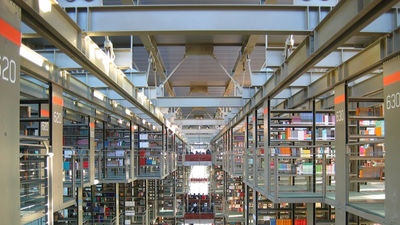A project to output a tactile map for visually impaired with a 3D printer with a portable note size

In the 3D printer,ArchitectureYacuisine, It is too realLife-sized figureAlthough it is also used to create such as Braille and unevenness printing "Tactile mapResearch is also proceeding as a means to make ".
How 3D-Printed Maps Are Helping the Blind and Visually Impaired - CityLab
http://www.citylab.com/tech/2016/02/3d-printing-gives-maps-a-high-tech-boost-for-the-visually-impaired-blind/471231/
The Potential of 3-D-Printed Maps to Help the Blind - The Atlantic
http://www.theatlantic.com/technology/archive/2016/03/3-d-printed-maps/471738/
New Brunswick, New Jersey, USA,Joseph Kohn Training CenterThere are state facilities that teach vocational skills for blind people and visually impaired people. The map inside the facility is a huge old wooden thing with a height of 2 feet by 3 feet in width (about 60 cm × 90 cm), and expresses facilities such as classrooms and stairs by hand-carving braille and wood pieces. However, as the map is hung on the wall and can not be carried around, the students had to remember all the internal structure of a three-story building.
Therefore, Howon Lee studying mechanical engineering at Rutgers University in New Jersey and Jason Kim, a student, have jointly started developing maps using 3D printers from the summer of 2015. Mr. Lee and Kim created tactile map data for visually impaired people using university 3D printers and modeling software. In the old wooden map of the Joseph Kohn Training Center, the map of the third floor of the building was gathered into one piece, but on the newly created map all floors are divided into separate parts. Furthermore, since the size of the map is small and the size of the notebook, it can be saved collectively in the binder and can be carried.
Mr. Lee and Mr. Kim are reflected in the following photographs and have a mini size touch map actually outputted by a 3D printer.

In the tactile map created by the two people, all the facilities of the building of Joseph Kohn Training Center are listed, and different symbols are used for each type of room. For example, with a touch like a circle for a male toilet, a triangle for a lady's toilet, a square for an elevator, a horizontal line for a stairway, etc., so that a visually handicapped person can touch on a map and recognize what kind of facilities are located It is getting.

Touch maps for the visually impaired have existed since the 1880's, and architects and scientists have made improvements, but most of the maps were uneven with embossed printing on one large paper . According to Mr. Lee, the strength of 3D printer maps is portability, creation speed, durability, "the greatest strength is that you can change the contents of the map according to the people you use. If you create the 3D model with the necessary information and send the data to the 3D printer, you can output the palm size map and carry it anywhere. " The following touch map is a version that increased information by braille.

Mr. Lee and Kim are seeking ways to create a 3D print map at a low cost and it is said that the goal is to reduce costs enough to distribute tactile maps to all Joseph Kohn Training Center students. In addition, as a long-term goal, it states "to make a map of the whole town". Lee said, "If you can create a map of the whole city with a 3D printer, you can always keep the map up-to-date by modifying the digital data even if the state of the town changes due to construction etc. "I commented.
Approximately 285 million people with visual impairment are estimated to be around 285 million people worldwide, and if it is possible to easily create a map with a 3D printer, it is believed to be helpful for living. In Japan, the Ministry of Land, Infrastructure and Transport is developing technology for 3D maps using 3D printers.
Touch map site
http://cyberjapandata.gsi.go.jp/tactilemap/

Related Posts:
in Hardware, Posted by darkhorse_log







